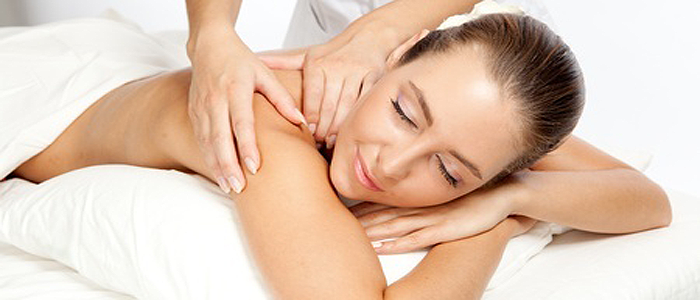Tuina Anmo

Tuina Anmo, commonly shortened to Tuina, is a part of Traditional Chinese Medicine (TCM) practiced for over 2000 years. TCM is based on Taoist principles that indicate that everything in the universe is interrelated. According to TCM, mind and body form an inseparable energetic system in which internal organs, physiological processes and functioning are all interconnected.
Several meanings can be extracted from Tuina Anmo: “tui” meaning “move”, “na” meaning “grasp”, “an” meaning “press” and “mo” meaning “rub”. Collectively, they describe the manual treatments involved in this ancient technique, manipulating methods like gliding, tapping, rubbing, brushing, kneading, knocking, pulling, shaking, clapping, vibrating and acupressure. Regular therapeutic massage evolved into this complex treatment of rhythmic compressions oriented along the routes of various energy channels and special points on the body to bring the body into balance, removing blockages and maintaining a flow of Qi, the life force.
Practitioners apply these techniques based on diagnostic tools similar to acupuncture, including constitutional patterns of body and face shape, patient interview, pulse and tongue. To stabilize the flow of energy and reduce disturbances along the meridians, the client’s body is closely examined and then, treated individually. This holistic treatment is meant to heal the specific source of the complaint.
The tissue, metabolism and blood circulation of the related parts of the body are roused through the manual handling of the skin and musculature. Tuina even affects the nervous system. Neurotransmitters, the messengers, are stimulated on the nerve ends in the muscles and tissues, relieving pain. Muscle and joint flexibility improves with regular application of the loosening or distension of this manual therapy.
Possible areas of application:
- Headaches and backaches
- Arthritis, sciatica, muscle spasms
- Nervousness, exhaustion, insomnia
- Disorders of the digestive, musculoskeletal, respiratory and reproductive systems
- Traumatology
- Chronical illnesses
Tuina is used to safely treat everyone from children to the elderly, without side effects. Extremely versatile, Tuina can even be used for self-therapy. If you are a massage therapist, consider taking some time for self-care and trying these short exercises to prevent or heal the common cold:
1. The first exercise should release existing blockages. Massage the dorsal process on the seventh cervical vertebra, the point where six meridians run, with your middle finger. The dorsal process is on the back of the whirl curve and easy to find. Each whirl has a dorsal process which is like a handle for the muscles to move the spine. The largest one can be located on the seventh cervical vertebra, the Vertebra prominens.
2. The second exercise helps against shivering. Massage the highest point of the shoulders with both index fingers in circular motions. Factors causing the cold will be routed out of the body, and aches will be eased.
3. To reduce headaches and coughing, press the lung meridian (a yin meridian). You will find it on the internal side of the forearm between the tendon and the bone, not far from the wrist joint.
4. The next exercise’s aim is to re-establish the sense of smell when suffering from a cold. Massage the points on the lower ala wings of the nose with both fingers in a circular motion. The nose will release, and the sense of smell will be restored.
5. To strengthen the body’s defences, massage the large intestine meridian. First press the thumb and forefinger against each other to reach the thickening of the muscle. Then press the highest point of the thickening with another thumb against the metacarpus bone.
6. The last and sixth exercise is for the relaxation of the eyes. Rub the bone arches lightly with two fingers from inside near the bridge of your nose to outside in the direction of your ears; you will feel the bones above and below the eyes. Repeat this exercise ten to fifteen times.
Renew energy flow to heal and balance the body with Tuina Anmo. Relaxing and energizing, we hope you experience this ancient restorative and preventive method and apply it to exercises at your practice and home.
Please visit the Educational Corner for our collection of current and past educational articles. The archive includes five categories: Health & Wellness, Massage & Bodywork, Product, Home Massage and Business. From massage research, product spotlights and detailed techniques to DIY self-care and business tips, browse our varied list and learn more.
We offer monthly newsletters to our valued customers. Each issue features new products, exciting releases, the latest news, educational articles and special exclusive offers. It’s easy and FREE. Please sign up here.






